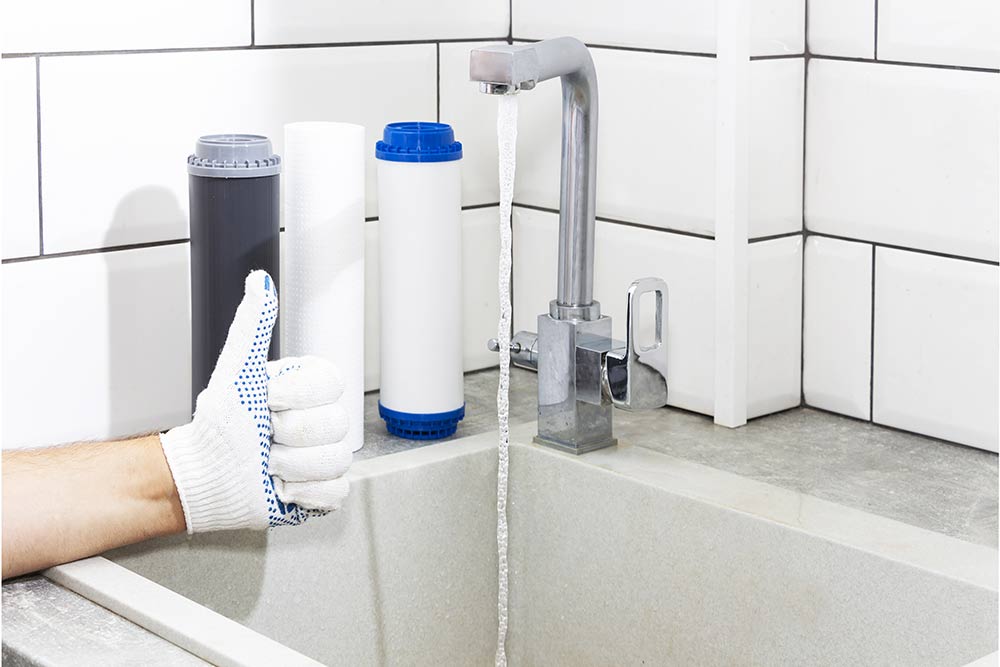Water, the essence of life, is a precious resource that requires careful management and purification to meet the diverse needs of both residential and commercial sectors. In this article, we will explore and compare the workings of residential reverse osmosis (RO) systems commonly found in homes to their commercial counterparts, which are designed to produce several thousand gallons of pure water for sale or industrial use, particularly in the electronics industry.
Residential reverse osmosis systems have become increasingly popular in homes as a reliable means of ensuring clean and safe drinking water. These systems typically consist of a pre-filter, a membrane, a post-filter, and a storage tank. The process involves the application of pressure to force water through a semi-permeable membrane, effectively removing impurities and contaminants.
- Capacity:
- Residential RO systems are designed to cater to the daily water consumption needs of a household. They typically produce between 50 to 100 gallons of purified water per day.
- The limited capacity is suitable for meeting the drinking and cooking water requirements of a family but may not suffice for larger-scale applications.
- Filtration Efficiency:
- Residential RO systems excel at removing common contaminants such as sediment, chlorine, and heavy metals. However, they may struggle with certain industrial pollutants and microorganisms due to their limited filtration capabilities.
- The primary goal of residential systems is to enhance the taste and safety of drinking water rather than providing ultra-pure water for industrial processes.
- Ease of Installation and Maintenance:
- Residential RO systems are designed for easy installation and maintenance. Many homeowners can install these systems themselves, and routine maintenance usually involves replacing filters and sanitizing components.
- The simplicity of residential systems, both in terms of installation and maintenance, caters to the needs of homeowners seeking a reliable and cost-effective solution for purified water.
Commercial Reverse Osmosis Systems
In stark contrast, commercial reverse osmosis systems are engineered to meet the demands of large-scale water purification, particularly in industries such as electronics manufacturing where ultra-pure water is essential.
- Capacity:
- Commercial RO systems are designed to handle significantly larger volumes of water compared to their residential counterparts. These systems can produce several thousand gallons of pure water per day, making them suitable for industrial applications.
- The high capacity ensures a consistent and reliable supply of purified water, essential for industrial processes that demand large quantities of ultra-pure water.
- Filtration Efficiency:
- Commercial RO systems boast a higher level of filtration efficiency, capable of removing a broader range of contaminants, including dissolved minerals and trace impurities that are critical in industries like electronics manufacturing.
- The ultra-pure water produced by commercial RO systems meets the stringent quality standards required for advanced manufacturing processes, ensuring the integrity of electronic components.
- Complexity and Precision:
- Commercial systems are more complex and often incorporate additional stages of filtration, such as mixed-bed deionization or additional membranes, to achieve the desired level of water purity.
- The precision of commercial RO systems in controlling water quality makes them indispensable in industries where even minute impurities can adversely affect product quality and performance.
Comparison and Considerations
- Cost:
- Residential RO systems are generally more cost-effective both in terms of initial investment and ongoing maintenance. They are designed to balance efficiency with affordability for household use.
- Commercial RO systems, on the other hand, involve a higher initial cost due to their larger size, complexity, and advanced filtration capabilities. However, the investment is justified by their ability to meet the stringent requirements of industrial applications.
- Maintenance:
- Residential systems are user-friendly, with simple maintenance requirements that can be handled by homeowners.
- Commercial systems, due to their complexity and precision, may require professional maintenance and monitoring to ensure optimal performance. This adds to the overall operational costs but is crucial for industries where water quality is non-negotiable.
- Purpose and Application:
- Residential RO systems are tailored for meeting the daily drinking and cooking water needs of households. They are not equipped to handle the demands of large-scale industrial processes.
- Commercial RO systems are purpose-built for industries with specific water quality standards, such as electronics manufacturing, pharmaceuticals, and laboratories. Their precision and capacity make them indispensable in these settings.
The choice between residential and commercial reverse osmosis systems boils down to the specific requirements of the end-user. Residential systems provide an efficient and cost-effective solution for households seeking improved water quality for daily consumption. On the other hand, commercial systems are engineered to meet the exacting standards of industries, particularly those that demand ultra-pure water for intricate manufacturing processes. The key considerations include capacity, filtration efficiency, cost, maintenance, and the intended application, all of which contribute to the overall effectiveness of the chosen reverse osmosis system.


